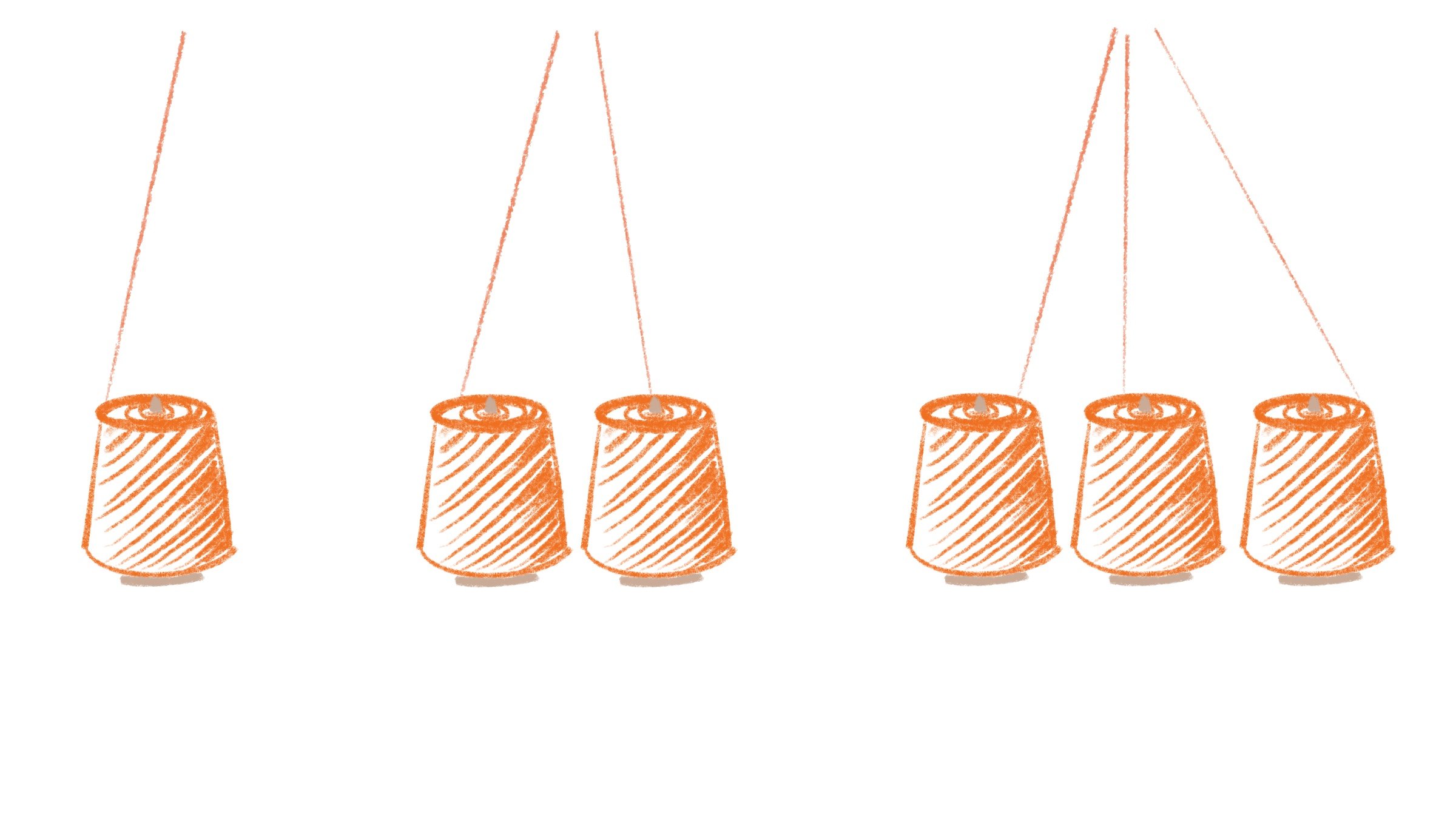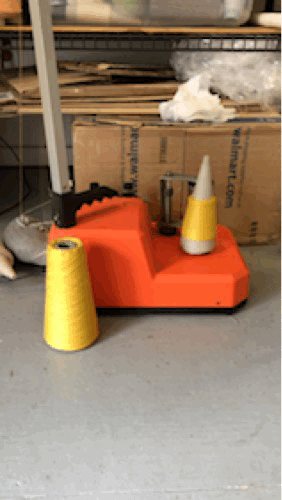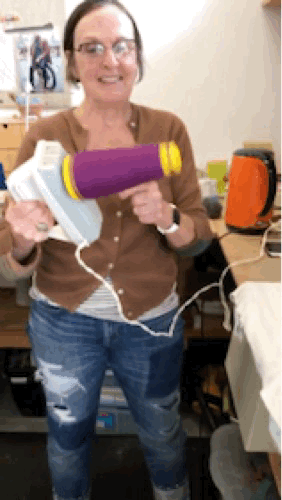Knitting with Multiple Ends
I mention working with multiple ends in the Beginner Class, but we have had enough questions about it that maybe I need to elaborate.
Knitting with 1, 2 and 3 ends
When I talk about ENDS, I am referring to the number of cones (or cakes) of yarn being used together to knit a piece of fabric.
Of course, you can knit with just one end if it is the right size for your machine/project. And that is probably the case most of the time. But you may have acquired some yarn that is too thin to be knit on its own, in which case you can double (or triple) it up, to get a better fabric weight and tension.
This is actually the usual method in factories. It is much more efficient to keep stock of a fine yarn. You can use that yarn single, double, etc on different machines.
When I ran my design studio, I had a big library of 2/30s Italian merino. I used it single end on the 12gg machine, and could use 2, 3, 4, 5 and 6 ends together on my standard gauge Brother and 10 or 12 ends on the Bulky machine.
This didn’t mean I had 12 cones of yarn at the ready for each color. Usually I just had one cone and had to split it onto different cones. This required laboriously winding the yarn onto empty cones using an ancient Italian Simet cone winder, that came to me broken. It was fixed several times over the years, including after a chair fell on it and smashed the base. I used a big rock to rest under the tensioner to prevent it from tripping. And it wasn’t designed to wind onto the cones I was using - but I had a special method of stuffing the cones with a piece of knitting to make any cone fit the winder. Sometimes, the cone would fly off and the yarn would continue to wind, creating a big tangle.
1 - 12 ends of 2/30s merino used on various machine gauges
So, it wasn’t without its issues, but when everything went smoothly, it made a really good, tightly wound cone. And once the required cones of yarn were wound off, I was good to go.
Imagine 12 cones of yarn crowded behind the machine! Sometimes I worked with several colors. That would mean 24, 36 or more cones. It was quite an exercise to get none of them touching and all of them running smoothly.
Occasionally, I was tempted to double up the yarn on a cone. I would wind off more than I needed and then feed the original and new cone through the winder onto a third cone, so that it was doubled up. I would usually regret it, though. Two ends wound together on a cone could never again be single ends.
Italian Simet cone winder
Ready and waiting
HOW TO WORK WITH MULTIPLE ENDS
First you need to decide how many ends you need. This might require a swatch with two ends, three ends, four ends, etc. So you are going to have to do some winding. A cone winder is best, but hard to find. I have had moderate success using a food mixer (see video on IG and in the Yarn chapter in the Beginner class). If the yarn is thicker, you could use a cake winder, but you will make yourself unhappy if you use this method for fine yarn.
Winding yarn with food mixing
Cake winder
When you have your cones ready, stand them behind the machine (ideally on the floor, so they have a bit of a journey before they start going through feeders), Make sure they are not touching. Make sure they are not going to catch on anything on the way up. Feed all of the ends together through the same feeders. That leaves the other feeder(s) free for other colors.
PLAYING WITH COLOR
Swatches with 2, 3 and 4 colors knit together.
You can get some interesting effects using multiple ends of different colors, textures, content. You are not going to get an even blend of the different colors. It’s unpredictable. Sometimes one color will come to the front, sometimes another. In the business, this is known as a feed stripe.
You can also play around with adding an end of sparkle to a plain yarn, or something hairy, or stretchy. There are lots of reasons for working with multiple ends!







